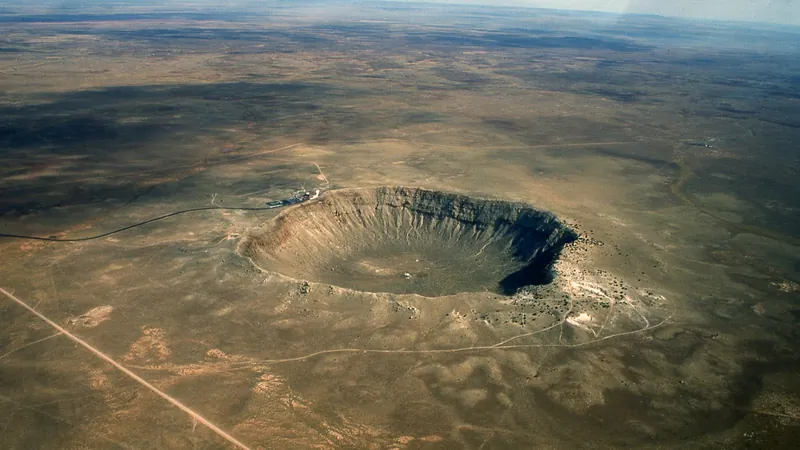
Did a Meteorite Ignite a Catastrophic Landslide in the Grand Canyon 56,000 Years Ago?
2025-07-18
Author: Lok
A colossal meteorite impact thousands of years ago may have triggered an enormous landslide in the Grand Canyon, dramatically altering the course of the Colorado River that flows through this iconic national park.
Geologists have uncovered intriguing evidence linking the Grand Canyon to the renowned Meteor Crater in northern Arizona. Their research, based on driftwood and lake sediments discovered in Stanton's Cave—situated in Marble Canyon, eastern Grand Canyon—hints at a historical connection.
After meticulous excavation and radiocarbon dating, scientists revealed that the driftwood is approximately 56,000 years old. Today's Stanton's Cave is perched 150 feet above the Colorado River, but this study proposes that ancient paleolake conditions caused by a massive landslide once transported the wood to its current location.
"Imagine a flood ten times larger than any we've seen in recent history," said Karl Karlstrom, co-lead author of the study and an Earth and planetary science expert at the University of New Mexico. His statement underscores the unprecedented scale of flooding that could have occurred.
The research postulates that the very impact which created Meteor Crater could have catalyzed a paleolake within the Grand Canyon. This event would have unleashed an earthquake with a magnitude between 5.4 to 6, powerful enough to destabilize cliffs located 100 miles away and instigate a massive landslide. Such a landslide could have generated enough debris to dam the Colorado River, subsequently forming a lake.
Geologists are also exploring other caves high above the river for more signs of this geological drama. In addition to the driftwood, evidence like ancient beaver tracks—found in areas currently unreachable by these aquatic animals—supports the theory of a prehistorical lake.
The data suggests that this paleolake could have stretched around 50 miles long and nearly 300 feet deep, with sediment samples uncovered up to elevations of 3,084 feet. Over the ages, the dam blocking the Colorado River would have likely been eroded and filled with sediment, altering the landscape.
Despite these compelling links between the meteorite impact, the paleolake, and the landslide, the researchers caution that more studies are needed to rule out other possible explanations for how the river was dammed, such as rockfalls or localized quakes occurring around the same timeframe.


 Brasil (PT)
Brasil (PT)
 Canada (EN)
Canada (EN)
 Chile (ES)
Chile (ES)
 Česko (CS)
Česko (CS)
 대한민국 (KO)
대한민국 (KO)
 España (ES)
España (ES)
 France (FR)
France (FR)
 Hong Kong (EN)
Hong Kong (EN)
 Italia (IT)
Italia (IT)
 日本 (JA)
日本 (JA)
 Magyarország (HU)
Magyarország (HU)
 Norge (NO)
Norge (NO)
 Polska (PL)
Polska (PL)
 Schweiz (DE)
Schweiz (DE)
 Singapore (EN)
Singapore (EN)
 Sverige (SV)
Sverige (SV)
 Suomi (FI)
Suomi (FI)
 Türkiye (TR)
Türkiye (TR)
 الإمارات العربية المتحدة (AR)
الإمارات العربية المتحدة (AR)